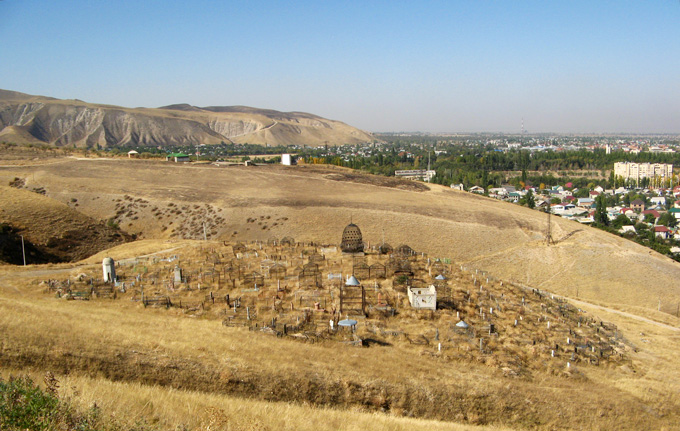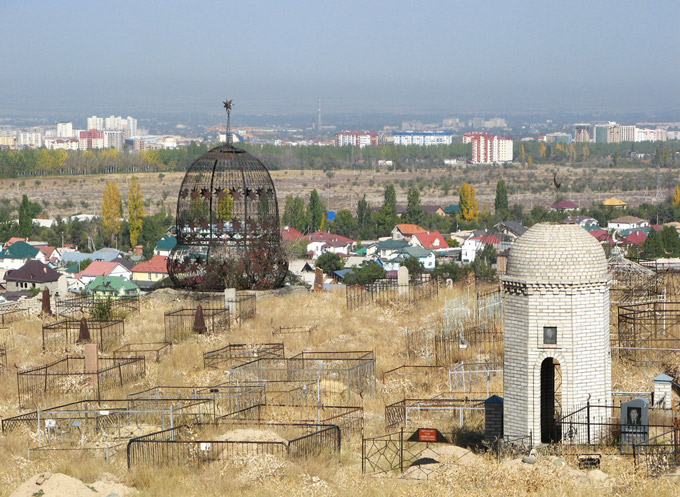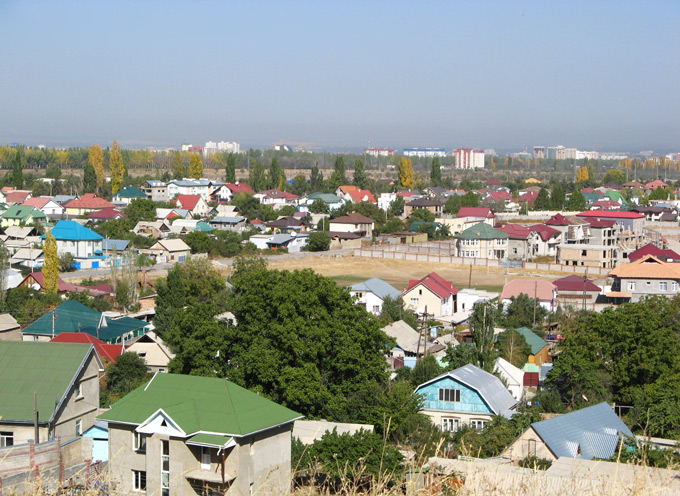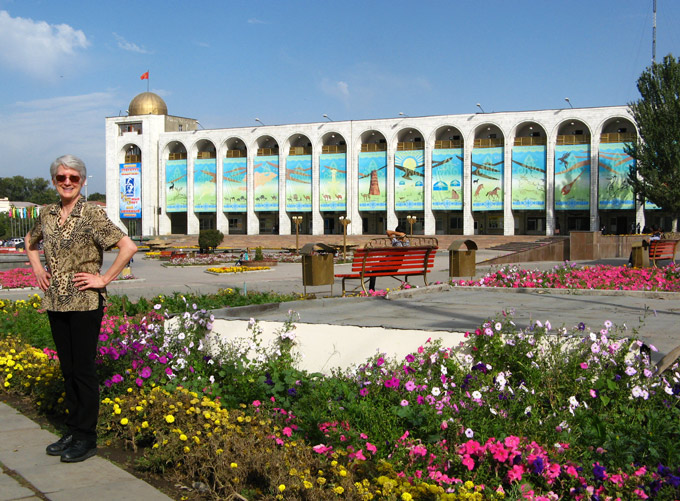
Ala-Too is the central square in this capital city, serving as a venue for state events and celebrations, not to mention protests. This view looks across a main artery toward the National Historical Museum, formerly bearing Lenin’s name:
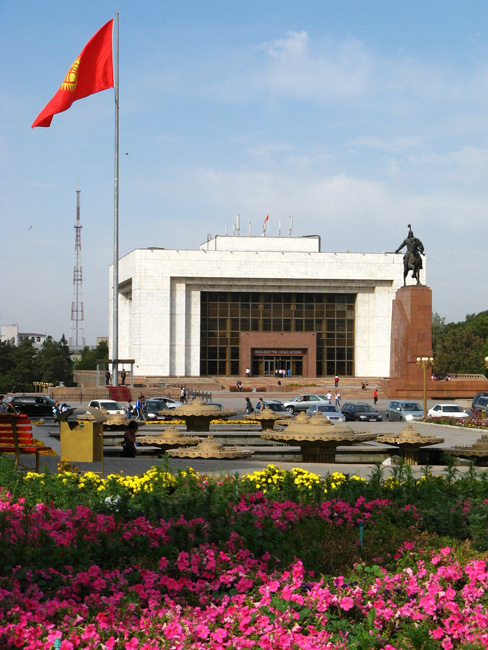
At the base of the national flag stand two honor guards, protected from extreme weather by air conditioned cubicles:
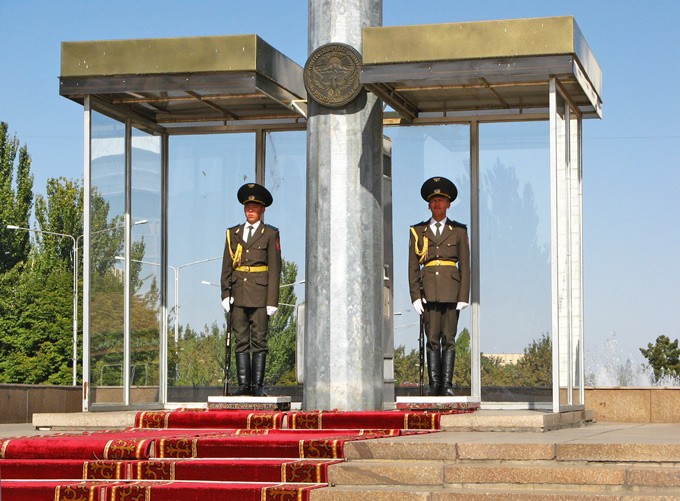
Within a block or two of this square are the most important government buildings and universities, the President’s office included:
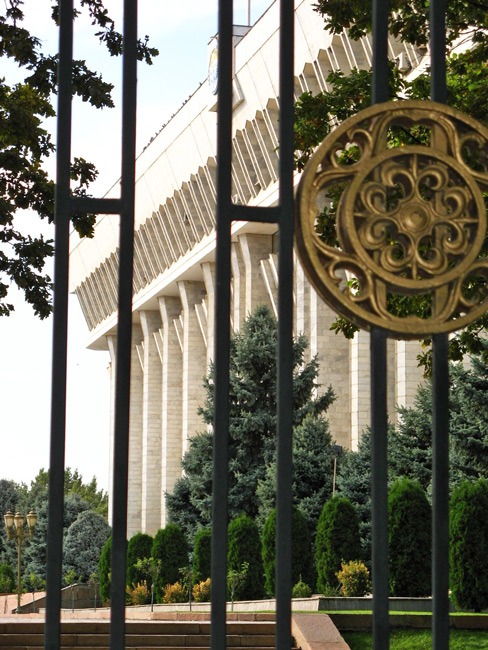
From the front, it is not hard to see why it is called the “White House”:
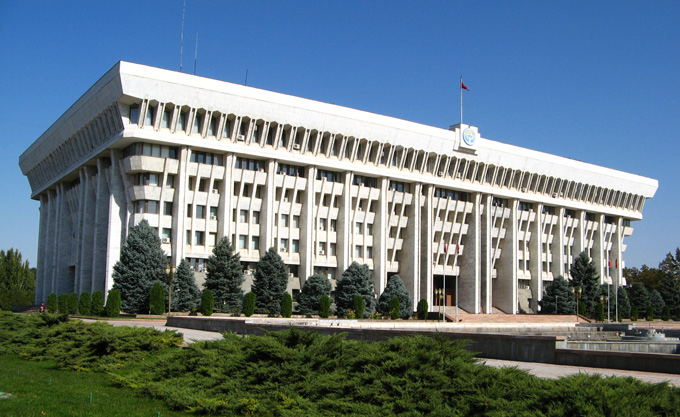
At night, the square is almost magical, a favorite place for apartment-dwelling residents to stroll on warm summer evenings:
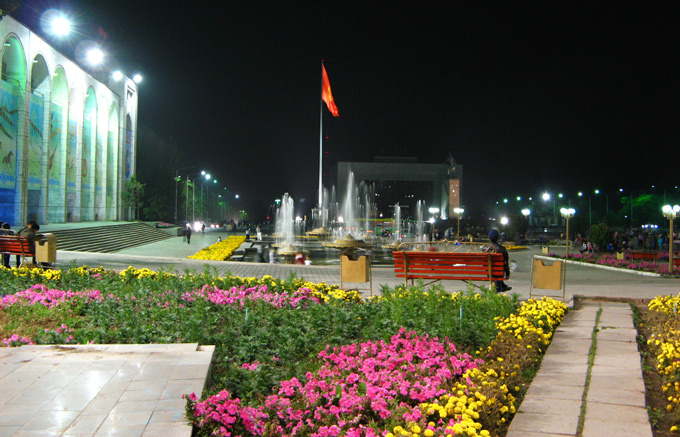
Every weekend, musical accompaniment blares from loudspeakers and automobile traffic is restricted.
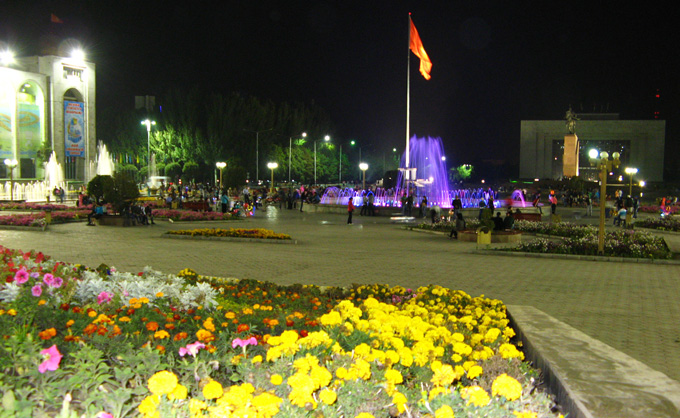
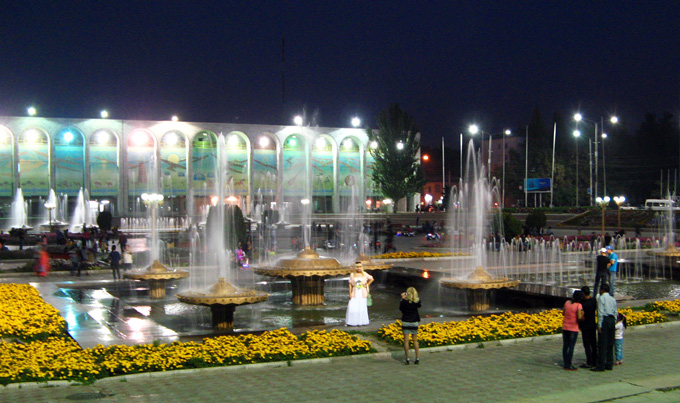
In time, we explored a large part of the central area on foot. We found many monuments, shady pathways (such as below) and several unusual buildings.
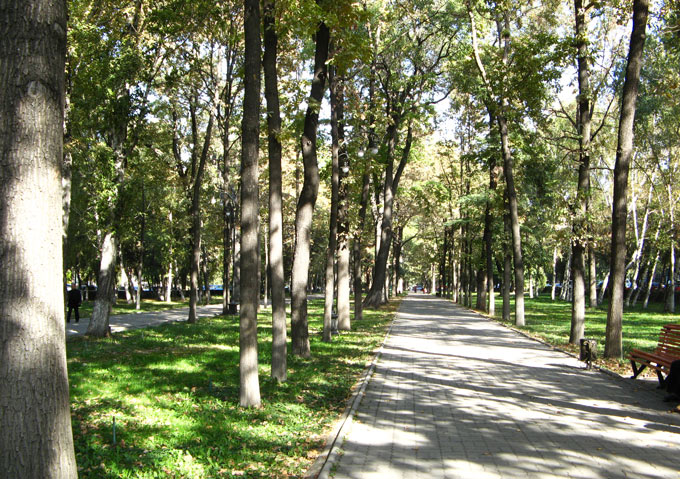
Naturally, while walking, it is always wise to watch what is underfoot. Bishkek has its share of downright-dangerous sidewalks but it also has some that are truly magnificent:
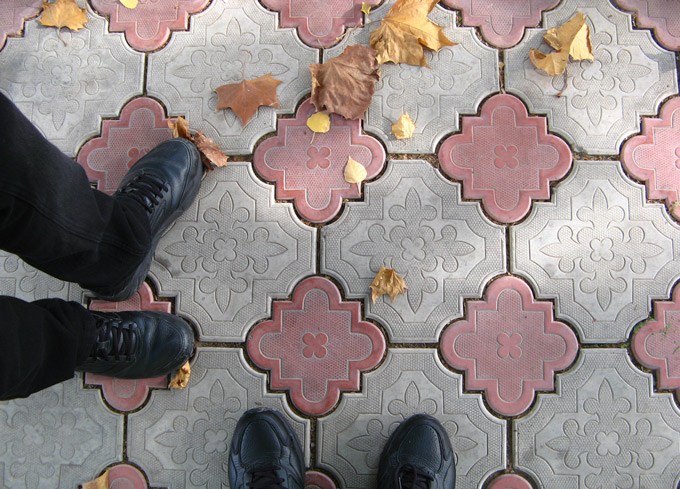
We observed later that more of these beautiful tiles are being installed ...
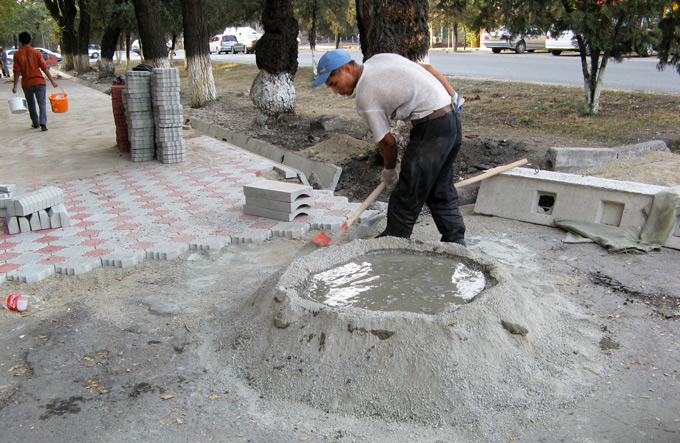
In a more secluded corner of Ala-Too Square is the Peoples’ Friendship Monument ...
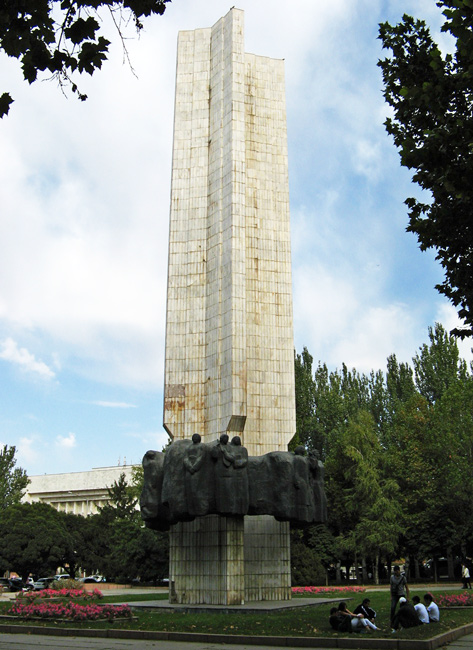
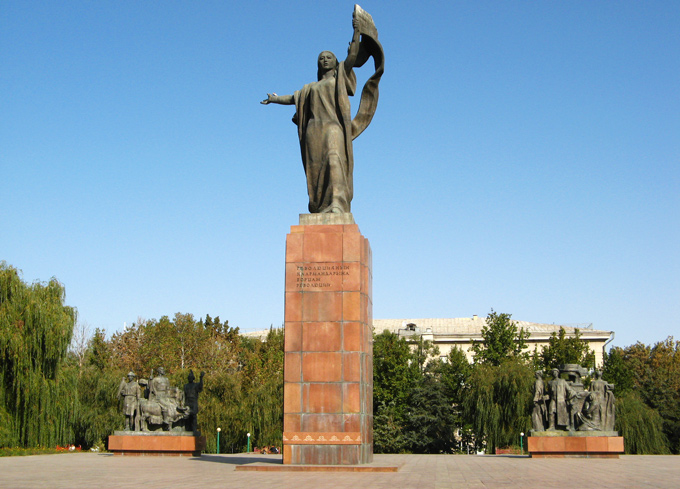
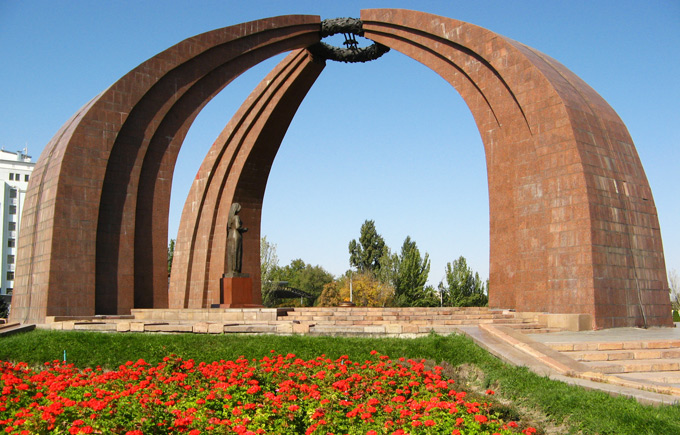
Near the Sports Palace is a statue of Kyrgyz strongman, Kojomkul (1889-1955), a legendary wrestler weighing 360 lbs at his peak:
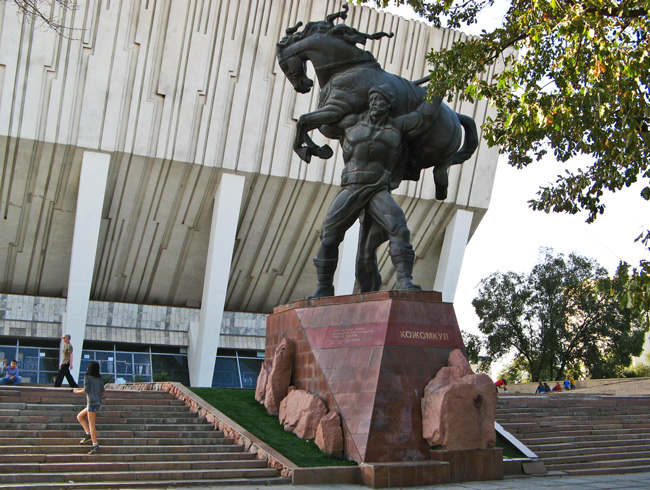
A statue of Mikhail Frunze, hero of the Bolshevik revolution, is upstaged by a little tyke --- at least, in her mother’s eyes:
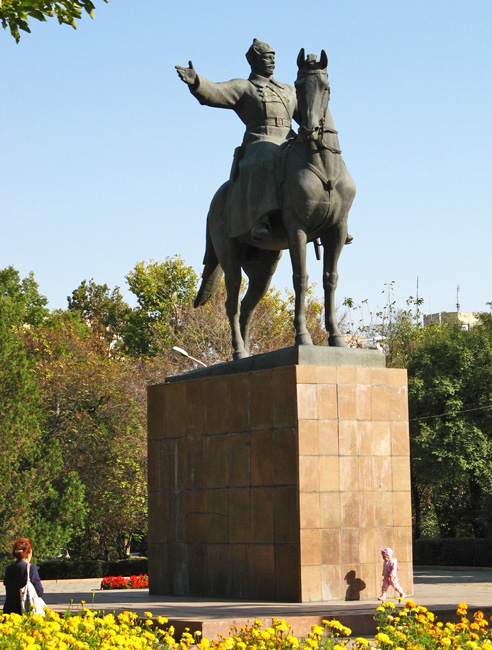
And, finally, behind the Historical Museum, viewed from his sunny side, is the oversized statue of Vladimir Lenin:
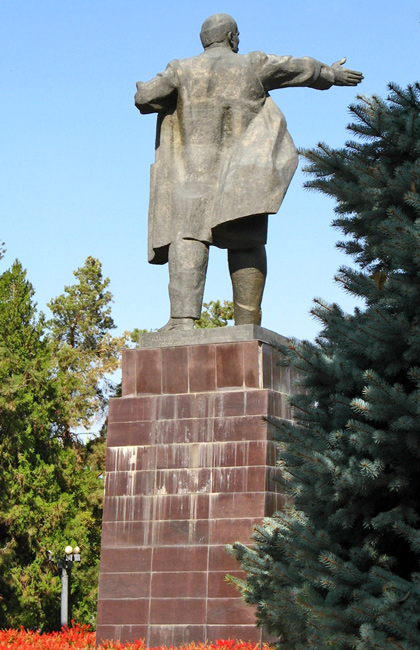
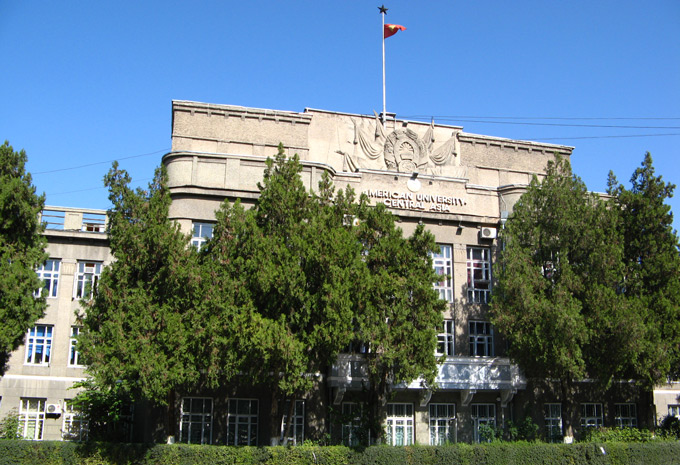
A few doors down “our” street is this novel building, which brings the forest right to town:
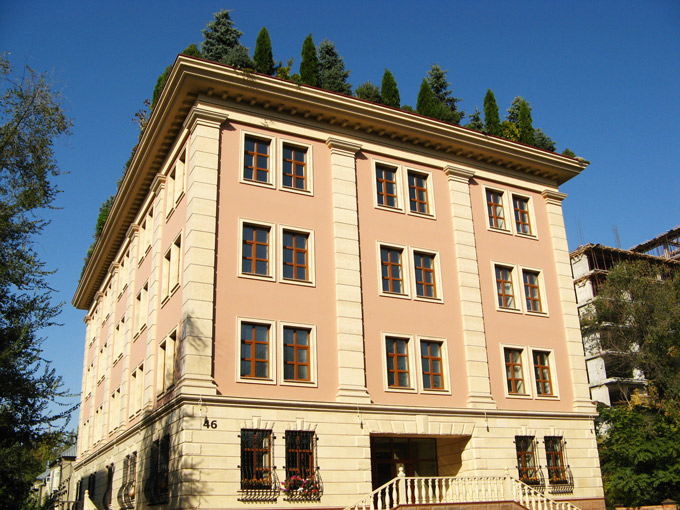
Another eye-catching building close by is the Bishkek Circus building near Victory Monument:
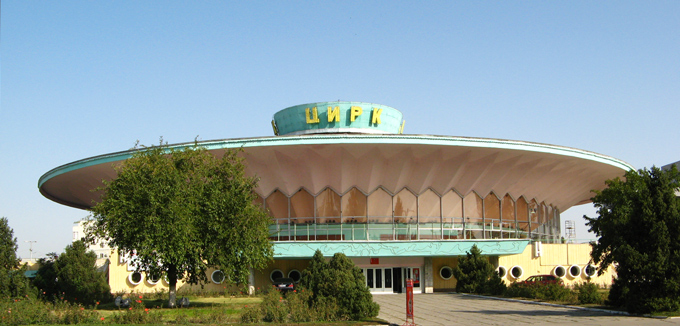
By car, we stopped for a closer look at the city’s principal mosque, the only one allowed open in Soviet times ...
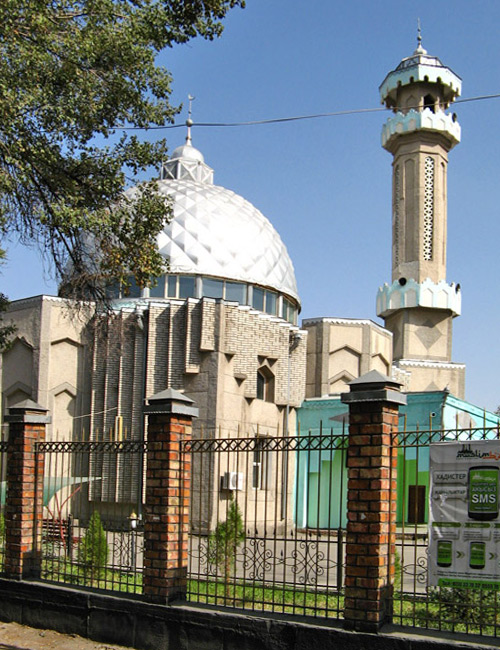
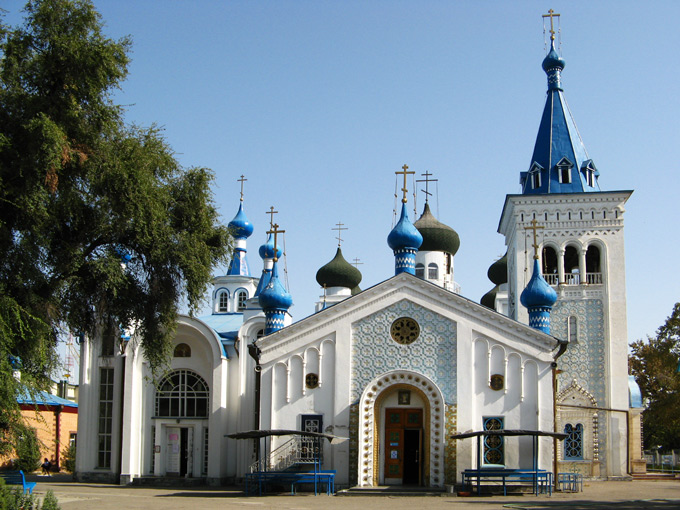
Bishkek is on an important rail line; so, we checked out the train switching yard:
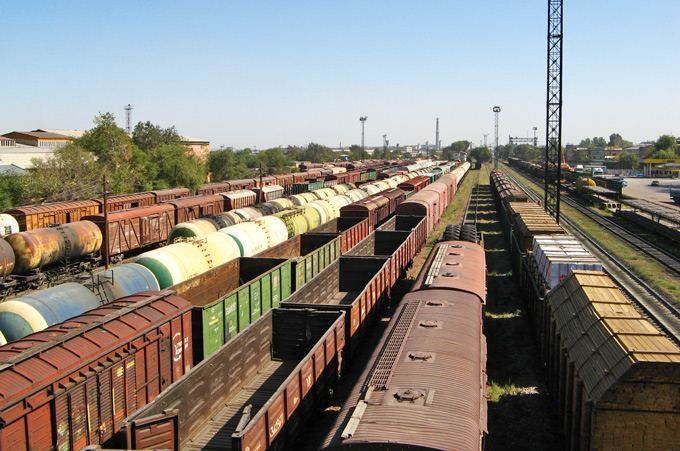
Moving through town, this truckload of corn for animals reminds us that this is an agricultural region:
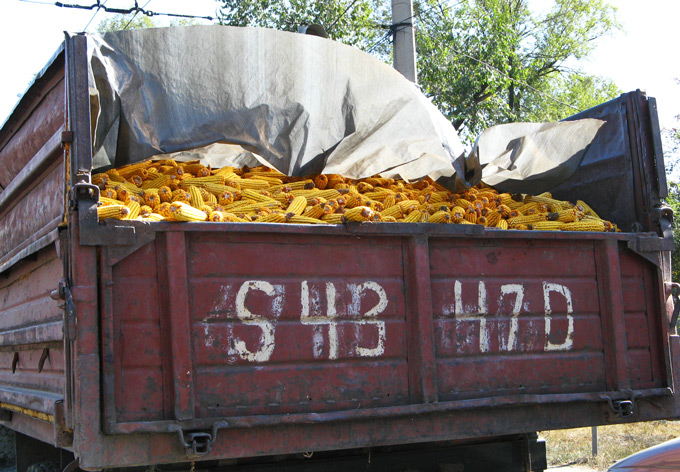
Louay took us into the hills south of town on roads that required high clearance and 4WD. This first view, toward the west, overlooks a typical cemetery:
